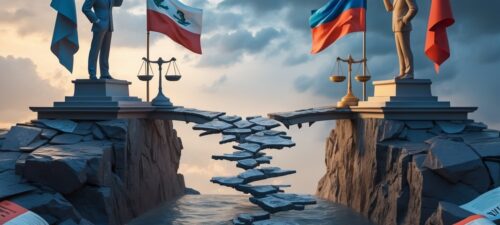Free Fire World Series Explained: Ultimate Guide to FFWS & Esports
Updated On: October 23, 2025 by Aaron Connolly
What Is the Free Fire World Series?
The Free Fire World Series stands as the top global championship for Free Fire, the popular mobile battle royale. Garena took what used to be the Free Fire World Cup and turned it into the FFWS, making it one of the most-watched esports tournaments anywhere. The prize pools are huge, and millions tune in.
The Role of Garena in FFWS
Garena runs the show as the official host and organizer of the Free Fire World Series. They handle everything from team selection to handing out prizes.
As the developer behind Free Fire, Garena decides on the competitive format and sets the rules. They pick how many teams each region sends and shape the tournament structure. Garena also takes care of all the broadcasting and streaming.
They put up the big prize pools that bring in top teams from all over. Some recent tournaments had hundreds of thousands of dollars up for grabs. Garena works with partners in different regions to run qualifiers everywhere.
Their investment has really helped Free Fire become a serious esports title. Consistent support from Garena keeps production values high and ensures global reach.
The Evolution From Free Fire World Cup to FFWS
Free Fire’s world championship started as the Free Fire World Cup back in 2019. The first event happened in Bangkok, Thailand, with a $100,000 prize pool at the Bitec Bangna Convention Centre.
Later, Garena rebranded the tournament as the Free Fire World Series. This new name matched the expanded format and came along with bigger prize pools and more teams.
When the pandemic hit in 2020, Garena switched things up with the Free Fire Continental Series. They split the action into three regional events—Asia, EMEA, and Americas. That move worked out, drawing 1.5 million peak viewers and offering a $300,000 prize pool.
Now, FFWS runs multiple seasons each year. Teams battle it out in spring and fall, plus there are other big events like the Esports World Cup.
Significance in Free Fire Esports
The Free Fire World Series is the top achievement in Free Fire esports. If a team wins FFWS, they become legends in the scene.
FFWS 2021 shattered records, becoming the world’s most-watched esports event by peak viewership at the time. That really showed everyone that mobile esports could go toe-to-toe with PC tournaments for fans’ attention.
The tournament pushes regional competition everywhere. Teams have to perform in local qualifiers just to make it to FFWS, so every region’s scene stays active and competitive.
For pro players, FFWS is the big one. The prize money and sponsorships make it the highlight of the Free Fire calendar.
FFWS 2025: Roadmap and Major Changes
FFWS 2025 shakes things up with a new format. Indonesia will host the Global Finals, which now stretch across three weekends in November.
The finals only last two days. Garena’s also rolling out the Champion Rush Point system to decide the winner.
Overview of the 2025 Format
FFWS 2025 changes the way teams fight for the championship. Instead of the usual three-day final, the tournament now features two days: the Point Rush and the Grand Final.
Indonesia will host the Global Finals in November. 18 teams will compete over three weekends, making this the longest FFWS tournament to date.
Garena also confirmed Free Fire’s return to the Esports World Cup 2025 in Riyadh, Saudi Arabia. That event runs from 15-20 July with 16 teams.
The regional structure now includes five main areas:
- FFWS Brazil
- FFWS Latin America
- FFWS Middle East and Africa
- FFWS Pakistan
- FFWS SEA (Indonesia, Malaysia, Thailand, Vietnam)
Key Tournament Dates and Locations
The FFWS SEA region gets things started in 2025. Hanoi, Vietnam will host the Spring Split from 25 April to 15 June.
The Fall Split heads to Bangkok, Thailand later in the year. These 18-team tournaments mix direct invites with regional qualifiers to pick who goes to the Esports World Cup.
Quick win: If you’re following SEA teams, mark these dates.
| Event | Location | Duration | Teams |
|---|---|---|---|
| SEA Spring Split | Hanoi, Vietnam | 25 Apr – 15 Jun | 18 |
| Esports World Cup | Riyadh, Saudi Arabia | 15-20 Jul | 16 |
| SEA Fall Split | Bangkok, Thailand | TBA | 18 |
| Global Finals | Indonesia | November (3 weekends) | 18 |
Champion Rush Point Format
The Champion Rush Point system is the big change for FFWS 2025. Teams need to rack up points through the tournament to hit this key threshold.
Once a team gets their Champion Rush Point, they have to win the next BOOYAH! to take the championship. It’s a high-stakes finish—leaders can still lose if they don’t close it out.
The knockout stage now gives double elimination points in the last game each day. This rule rewards aggression and discourages teams from just playing it safe.
Heads up: Even if a team leads early, they can lose it all in the final match if they haven’t reached their Champion Rush Point.
Active Skill and Scoring Rules
FFWS 2025 enforces a Unique Active Skill Rule. Every player on a team must use a different active skill—no more stacking the same loadout.
That change should shake up team strategies and force more variety. Teams can’t just run the same optimal combo on everyone.
The scoring system rewards steady performance over single-game blowouts. Teams earn points for placement and eliminations, but the Champion Rush Point means you need to stay consistent, not just win early.
These rules push teams to rethink their approach. Coaches now have to plan for long-term point-building and skill diversity, not just individual match wins.
Structure of the Competition
The Free Fire World Series uses a three-stage format. Teams start in regional qualifiers and fight their way to the global championships.
Each stage has its own scoring and elimination rules to test consistency and peak performance.
Regional Tournaments Breakdown
Regional tournaments are the backbone of FFWS. Teams in regions like FFWS SEA Spring, FFWS SEA Fall, and FFWS LATAM compete for spots at the global finals.
Most regional tournaments feature 18-24 teams split into balanced groups. The group stage format varies, but round-robin and Swiss-system formats are common.
Regional prize pools range from $15,000 to $300,000, depending on the region. The FFWS SEA Spring 2025, for example, offers $300,000—pretty wild for a regional event.
Winners from each region punch their ticket to the global FFWS. Some regions send runner-up teams too, so you get a pretty international mix at the world championship.
The Knockout Stage
The knockout stage is where things get really intense. Teams play elimination matches, and only the best move on.
The structure usually runs from late January to early February. For 2025, the Thailand Spring tournament scheduled its knockout phase from January 31 to February 9.
Organizers divide teams into groups of six to balance the competition. This way, both direct invites and qualified teams face similar skill levels.
Top 12 teams from the knockout phase advance to the Point Rush. Teams need to stay consistent across matches to survive.
Point Rush Rounds
Point Rush rounds decide final rankings by total points instead of direct elimination. Teams play multiple matches over a couple of days to rack up points.
Usually, this phase lasts two days. The 2025 Thailand Spring Point Rush, for instance, is set for February 14-15, with Grand Finals right after on February 16.
Scoring rewards both placement and eliminations. Teams have to balance playing aggressively with staying alive to maximize their points.
The highest-scoring teams from Point Rush make it to the Grand Finals. They get to fight for the championship and qualification to bigger tournaments like FFWS SEA Spring.
Global Events and Finals
The Free Fire World Series has two big global events. The Esports World Cup and the annual Global Finals bring together the best teams from around the world.
Esports World Cup 2025
Free Fire returns to the Esports World Cup in 2025 for its second run. It’s another big stage for teams to show what they’ve got.
Team Falcons took the first Free Fire World Cup title and snagged $300,000 in 2024. Not bad, right?
The Esports World Cup gives Free Fire extra global exposure. It brings the game to fans who might not usually follow the World Series.
Teams use this event to test themselves before the Global Finals. It’s a good way to see which regions are strongest.
Free Fire World Series Global Finals
The Global Finals are the main event for Free Fire esports each year. 18 teams from all over the globe compete for the top prize.
Tournament Format:
- Knockout Stage (multiple weeks)
- Points Rush (2 days)
- Grand Finals (1 day)
The 2025 Global Finals land in Jakarta, Indonesia. Garena keeps the tradition of rotating the event between regions.
Teams have to qualify through regional tournaments. Each region gets a set number of slots based on its competitive strength.
During the Finals, teams earn headstart points in the Points Rush stage. Those bonus points carry over to the final day.
Prize Distribution:
- Top 12 teams reach Grand Finals
- All finalists win prize money
- The champion takes home the biggest share
You can catch the tournament on several streaming platforms. The event streams in multiple languages to reach fans everywhere.
How Teams Qualify and Participate

Teams reach the Free Fire World Series mainly through regional tournaments, with a few spots set aside for direct invites. The qualification system keeps representation broad but standards high.
Regional Qualifiers Process
Most teams earn their spots through regional tournaments held throughout the year. Qualifiers run in regions like Southeast Asia, Brazil, Latin America, Middle East and Africa, and Pakistan.
Each region uses its own format. Southeast Asia sends the most teams—usually eight spots. Brazil and Latin America each send about three or four.
Teams compete in their region during specific seasons. For instance, the FFWS Southeast Asia 2024 Fall ran from August to October 2024. Buriram United Esports made it through by finishing in the top eight.
Attack All Around grabbed a spot as defending champs from 2022. RRQ qualified through the Southeast Asia regionals too.
The qualification timeline can stretch over several months. Teams play in national leagues first, then move up to regional finals. Winners and top performers from each region get direct entry to the Global Finals.
Regional qualifiers use the same battle royale format as the main tournament. Teams rack up points for placement and eliminations across multiple matches.
Invited Teams and Wildcards
Some teams skip regional qualifiers and get direct invitations. Team Falcons locked in the first FFWS 2024 spot by winning the Esports World Cup in Saudi Arabia.
Global tournaments like the Esports World Cup give out automatic qualification spots. These events open up extra ways for top teams to reach the World Series.
Organisers sometimes hand out wild card spots to previous champions or highly-ranked teams. They might invite teams because of strong past results or to balance regional representation.
Special qualifying events occasionally create more spots. Third-party tournaments sometimes offer extra chances to qualify outside the usual regional system.
Usually, the field features 18 teams, but that isn’t set in stone. In 2024, one team missed out due to visa issues, so only 17 teams competed.
Direct invitations help keep the competition tough and make sure all major Free Fire regions get a shot at the big stage.
Past Editions: History and Impact
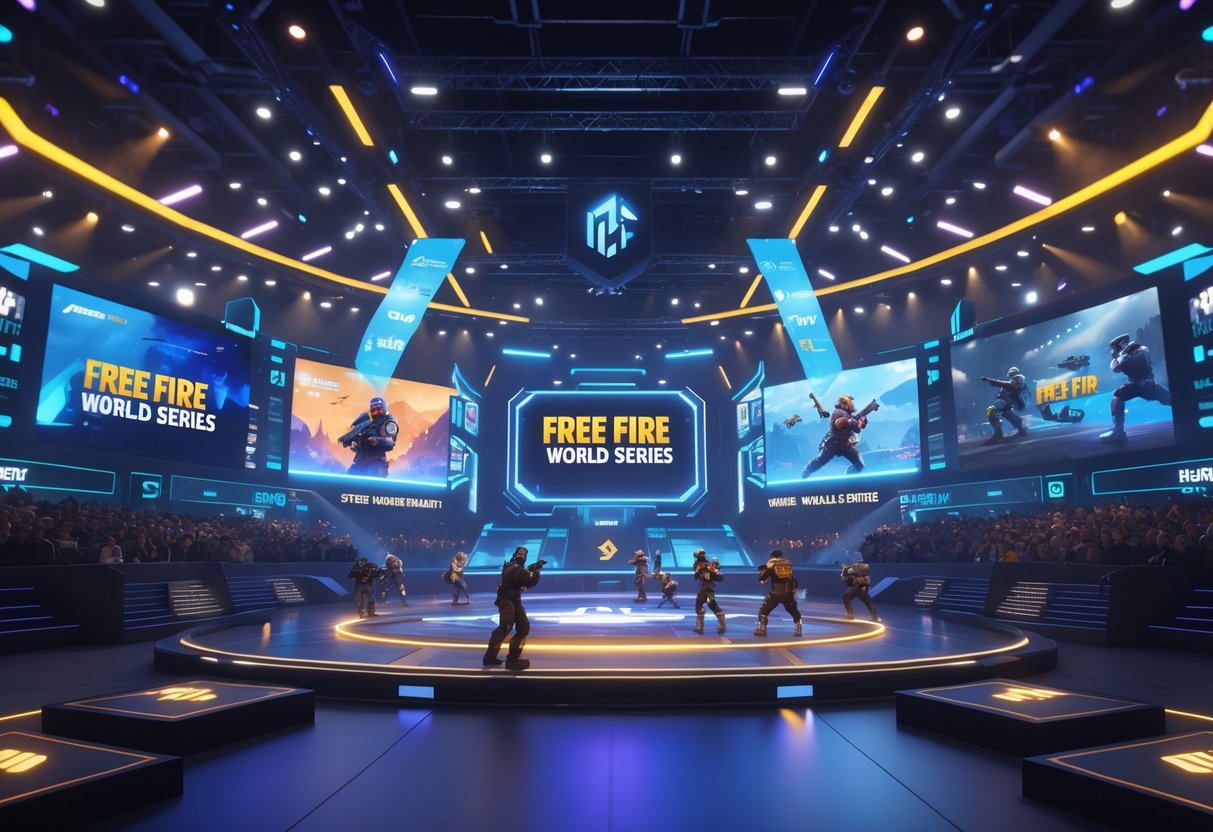
The Free Fire World Series has changed a lot since 2019. It has produced legendary champions and broken viewership records. Each tournament has shaped the competitive scene, bringing new regions and storylines to fans everywhere.
Notable Champions and Teams
Corinthians made their mark as the first FFWS champions back in 2019. The Brazilian squad dominated Rio de Janeiro with 132 points and put Brazil on the esports map early.
EVOS Phoenix became the most successful organisation in the tournament. They won their first title in Singapore as Phoenix Force in 2021. In 2022, they came back even stronger and clinched another championship in Bangkok, edging out the competition 117-114.
Attack All Around pulled off one of the tightest finals in 2022’s first edition. Their 92-91 win over EVOS Phoenix showed just how close things get at the top.
New champions have popped up in recent years. Magic Squad from Brazil took the 2023 Bangkok title, and Fluxo grabbed the 2024 championship back in Rio de Janeiro.
Team Falcons and other regional heavyweights keep pushing for the top, showing how talent has spread worldwide.
Record-Breaking Viewership Statistics
The 2021 Singapore finals made esports history with 5.4 million peak viewers. That number beat the League of Legends World Championship’s 4 million and made FFWS the most-watched esports event globally at the time.
Viewership hasn’t always stayed high, though. The first 2022 tournament dropped to 1.4 million concurrent viewers, mostly because Free Fire got banned in places like India and Bangladesh.
The very first tournament in 2019 drew 1.9 million peak viewers. The 2020 Continental Series replacement pulled in 1.5 million across three regional events.
These stats show just how big FFWS can get, especially in Southeast Asia and Latin America where Free Fire is incredibly popular.
Key Developments Over the Years
Prize pools have jumped around a lot. The first tournament in 2019 offered $400,000, but that shot up to $2 million for both 2021 and 2022. Lately, prize pools have settled at $1 million for 2023 and 2024.
Format changes have kept things interesting. The tournament grew from 12 teams in 2019 to a standard 18-team format. The second 2022 edition had 17 teams instead.
Regional representation has really expanded. Early editions stuck to established markets, but now teams from Pakistan, Morocco, and more Latin American countries join in.
Venue selection shows the game’s global reach. Brazil hosted twice (2019, 2024), Singapore twice (2021, 2022 first edition), and Thailand twice (2022 second edition, 2023).
The COVID-19 pandemic forced the organisers to adapt, cancelling two tournaments and introducing the Continental Series as a workaround.
Prize Pools and Rewards
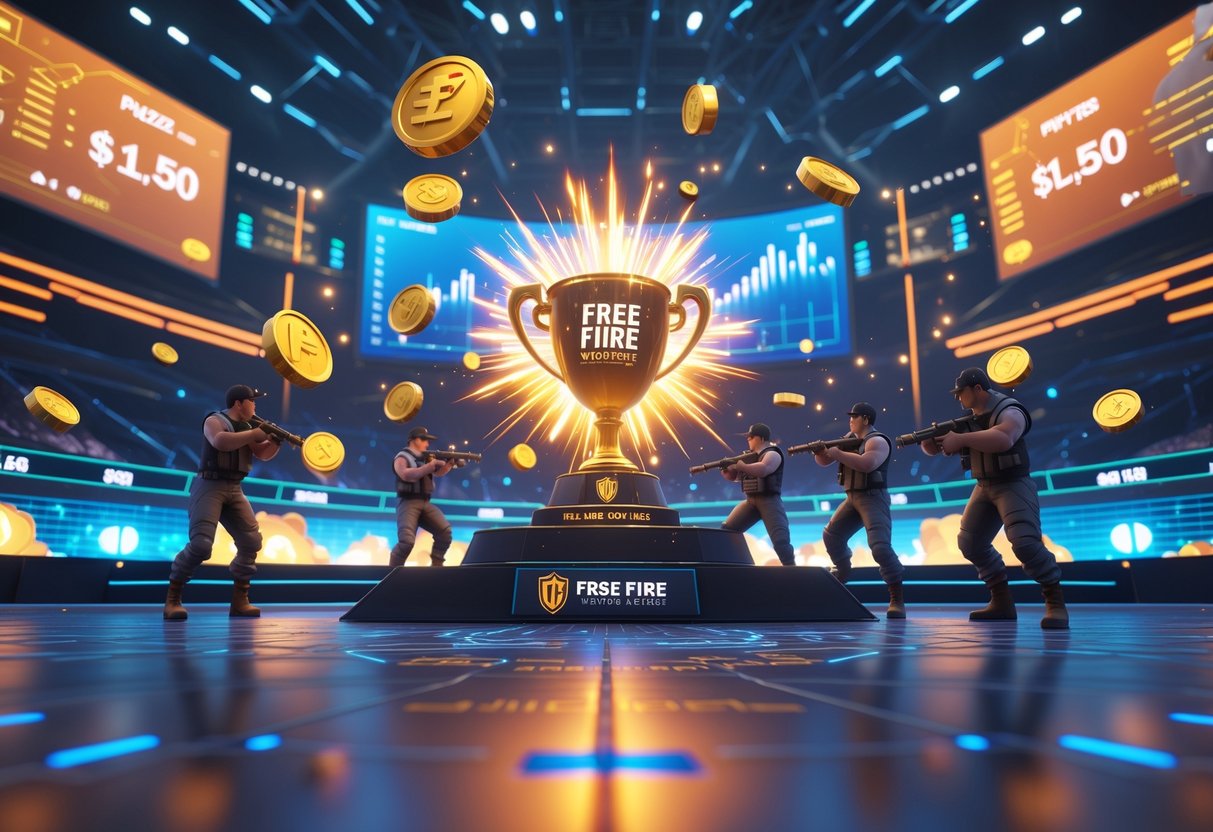
The Free Fire World Series doles out huge prize pools—sometimes up to $2 million. Winners can walk away with hundreds of thousands in cash. Teams also score exclusive in-game rewards and those unforgettable booyah moments that live on in Free Fire history.
Grand Finals Prizes
The FFWS grand finals spread prize money across every team, so every squad goes home with something. Fluxo grabbed $300,000 as 2024 champions, while RRQ Kazu got $150,000 for second place.
Here’s how the prize money broke down:
| Position | Prize Money | Example Team (2024) |
|---|---|---|
| 1st Place | $300,000 | Fluxo |
| 2nd Place | $150,000 | RRQ Kazu |
| 3rd Place | $70,000 | Buriram United |
Teams that finished 4th through 8th still picked up between $40,000 and $60,000 each.
Even teams knocked out early pocketed $15,000. Just qualifying is a big deal financially.
The total prize pool has grown over time. It’s climbed from $1 million in the early days to a $2 million max now.
Player and Team Awards
Winning FFWS brings more than just cash. Champions get permanent booyah celebrations and cool custom in-game content to show off their achievements.
Top players pick up individual awards, like the “Tournament Predator” title. Wassana from Buriram United earned this in 2024, even though his squad finished third.
Teams hand out Free Fire Max redeem codes to fans, boosting their profile and growing their fanbase. These codes usually feature team themes and player signatures.
Quick win: Follow your favourite championship teams on social media after the finals—they often drop exclusive redeem codes for fans.
Winners get automatic spots for the next tournament and better seeding. That gives them an edge beyond just the money.
Championship teams usually see big sponsorship boosts after a win. Many players go pro full-time after standout performances.
Major Regions and Their Leagues
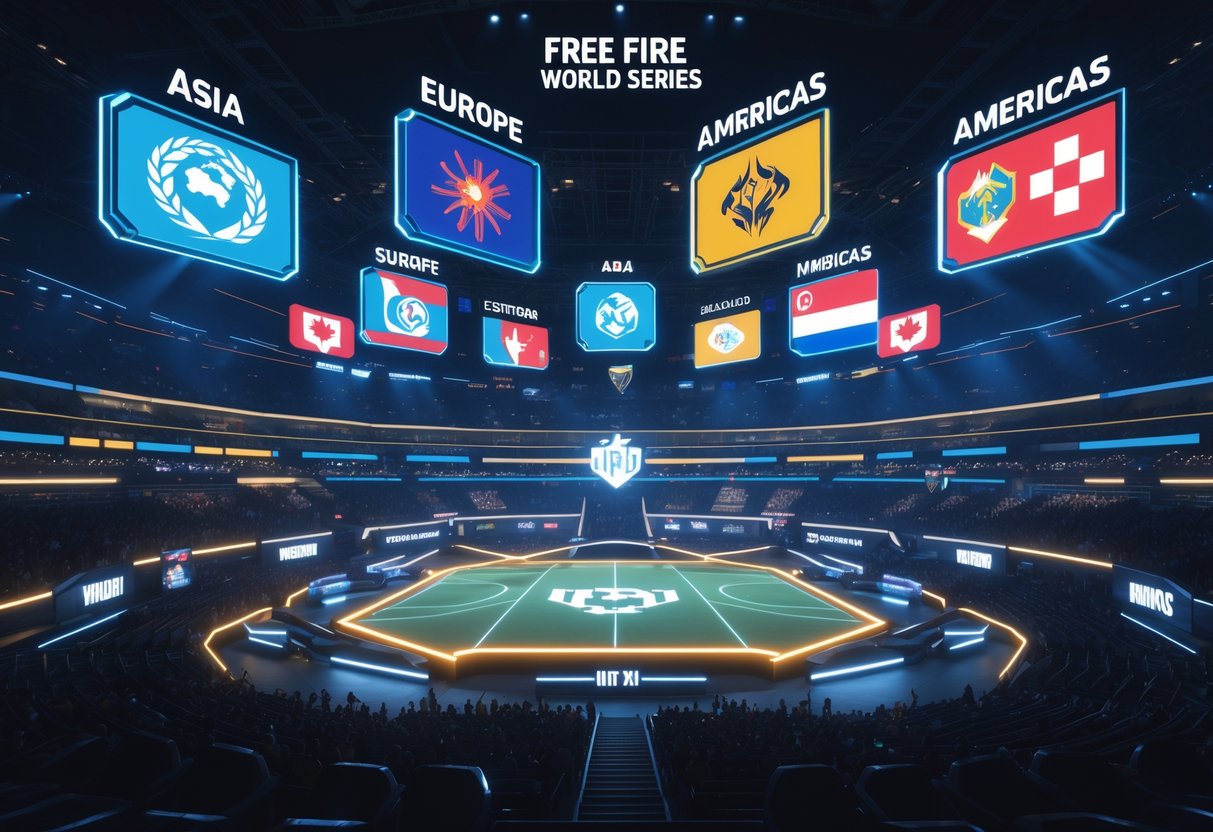
The Free Fire World Series runs across six major regions. Each one has its own seasonal leagues that feed into the global finals. These competitions include Southeast Asia’s spring and autumn circuits, Brazil and Latin America’s year-round tournaments, and the combined Pakistan, Middle East, and Africa competitions.
Southeast Asia (SEA) Leagues
Southeast Asia hosts two big tournaments every year. FFWS SEA Spring starts early, with signups opening in January.
Teams from Indonesia, Malaysia, Thailand, and other SEA countries battle for spots at the global finals. The spring season acts as the first major qualifier.
FFWS SEA Fall comes later, usually carrying even more weight for finals qualification.
Indonesia often hosts key SEA events because of its massive Free Fire player base. The country has become a major hub for tournaments and qualifiers.
Regional SEA tournaments usually feature 18 teams fighting for big prize pools. Major matches often pull in over 1.5 million viewers.
Brazil and Latin America Circuits
Brazil runs its own FFWS league, separate from the broader Latin America circuit. That makes sense, considering Brazil’s huge Free Fire scene and competitive history.
The FFWS LATAM covers countries across Latin America except Brazil. Teams from Mexico, Argentina, Colombia, and more compete here.
Both regions hold multiple tournaments through the year, leading up to the global finals in November. Brazil’s league often features some of the world’s toughest teams.
Latin American circuits have grown a lot, with regional champions earning direct tickets to global events. Prize pools here often match or beat other big regions.
The format uses local qualifiers that feed into regional finals. This setup makes sure teams from all over Latin America get a shot.
Pakistan, Middle East, and Africa Competitions
These three regions join forces in a single competitive circuit for FFWS. Pakistan has built a strong Free Fire scene with dedicated local leagues.
Middle East competitions include countries from the Gulf, Turkey, and nearby areas. Teams fight through regional qualifiers before moving on to combined tournaments.
Africa’s Free Fire scene keeps growing, with more countries joining up. South Africa and Nigeria regularly stand out in regional matches.
This combined format lets smaller scenes compete with more established regions. It opens the door for emerging teams to make it onto the world stage.
Prize pools for this combined region usually total $300,000 across the season. The format balances fair representation with tough competition for global spots.
Teams to Watch in FFWS
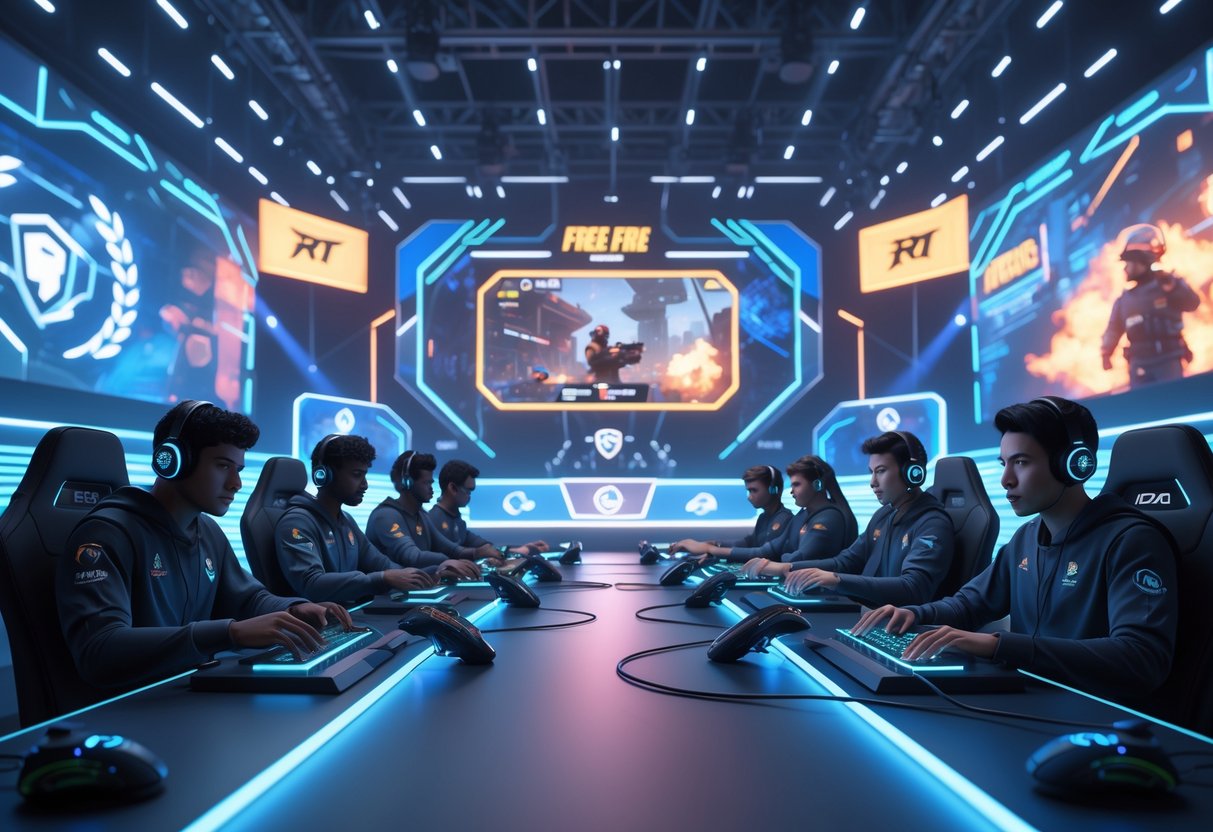
A handful of powerhouse teams keep dominating FFWS, but there are always new faces breaking through. Brazilian squads like Fluxo lead the way, with Thai organisations and rising regional champs close behind.
Top Contenders in 2025
Fluxo stands tall as the 2024 FFWS champions after their big win in Brazil. They topped four out of six maps during their run. That kind of consistency makes them early favourites for the next tournaments.
Buriram United Esports from Thailand keeps proving their mettle with multiple top-three finishes. They reached the finals in 2023 and grabbed third in 2024. That kind of composure under pressure says a lot.
RRQ made a statement by finishing as runners-up in FFWS 2024. They’ve built a strong reputation in Southeast Asian competitions. Their tactical plays often surprise their opponents.
EVOS Phoenix remains one of the most decorated teams in FFWS. They’ve won two championships and finished second once. Their experience in high-stakes matches is tough to match.
Thai teams have racked up three championship wins overall. Brazil isn’t far behind, with strong teams and the home crowd on their side.
Rising Stars and Notable Performances
Attack All Around stunned everyone by winning FFWS 2022 in their breakout year. They showed that new organisations can go toe-to-toe with the big names. Their win inspired other up-and-coming teams.
Regional qualifiers keep producing surprise contenders. Teams from Malaysia, Vietnam, and Indonesia often shake up the expected order. The qualification system guarantees fresh talent at every tournament.
P Esports and similar squads are part of the next generation. They benefit from better training facilities and coaching structures. Many focus on their regional strengths to get an edge.
The prize pool setup rewards steady performance, not just one-off wins. Teams finishing fourth through eighth still earn good money. This helps smaller organisations invest in players and equipment.
International exposure at FFWS helps regional teams land sponsors and grow their fanbase. Lots of players use strong showings here as a launchpad to bigger teams.
The Role of Garena in Free Fire Esports
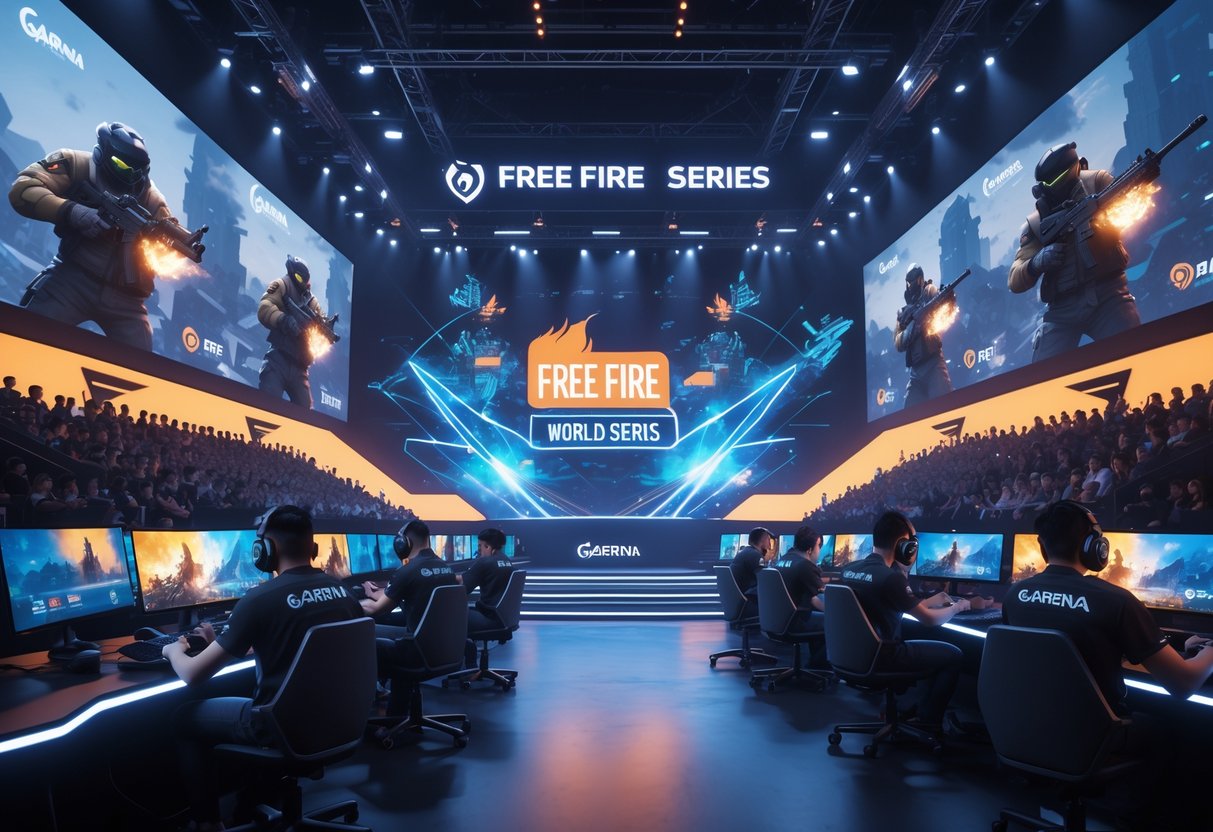
Garena drives Free Fire’s competitive scene, organising everything from regional tournaments to the world finals. The company invests in talent development and works closely with gaming communities around the world to grow the sport.
Global Talent Development Programme
Garena rolled out their Global Talent Development Programme as part of the 2025 roadmap. They’re aiming to support teams, players, and content creators with hands-on workshops and mentorship.
This programme links up aspiring players with industry pros who share advice on competitive gaming. The workshops dive into team coordination, strategy, and what it really takes to prep for tournaments.
Key programme features include:
- One-on-one mentorship with seasoned coaches
- Group workshops covering competitive strategies
- Content creation training for streamers and influencers
- Networking opportunities within the Free Fire community
Garena hasn’t said much about costs or application details yet. It looks like they’re trying to help more gamers make the leap from casual play to pro esports.
Community Engagement and Partnerships
Garena teams up with regional tournament organisers and gaming communities to push Free Fire esports worldwide. They work directly with local partners to run FFWS tournaments in five major regions.
The company boosts grassroots tournaments by offering technical support and prize pools. Garena gives direct backing to events in Brazil, Latin America, Middle East and Africa, Pakistan, and Southeast Asia.
Current partnership initiatives include:
- Regional qualifier tournaments with local gaming organisations
- Broadcasting partnerships for live tournament coverage
- Collaborations with mobile gaming platforms and sponsors
- Support for amateur tournaments and community events
By partnering with the Esports World Cup, Garena shows they’re serious about top-tier tournament experiences. Free Fire came back to the EWC 2025 in Saudi Arabia with a big prize pool and global attention.
How to Watch and Get Involved
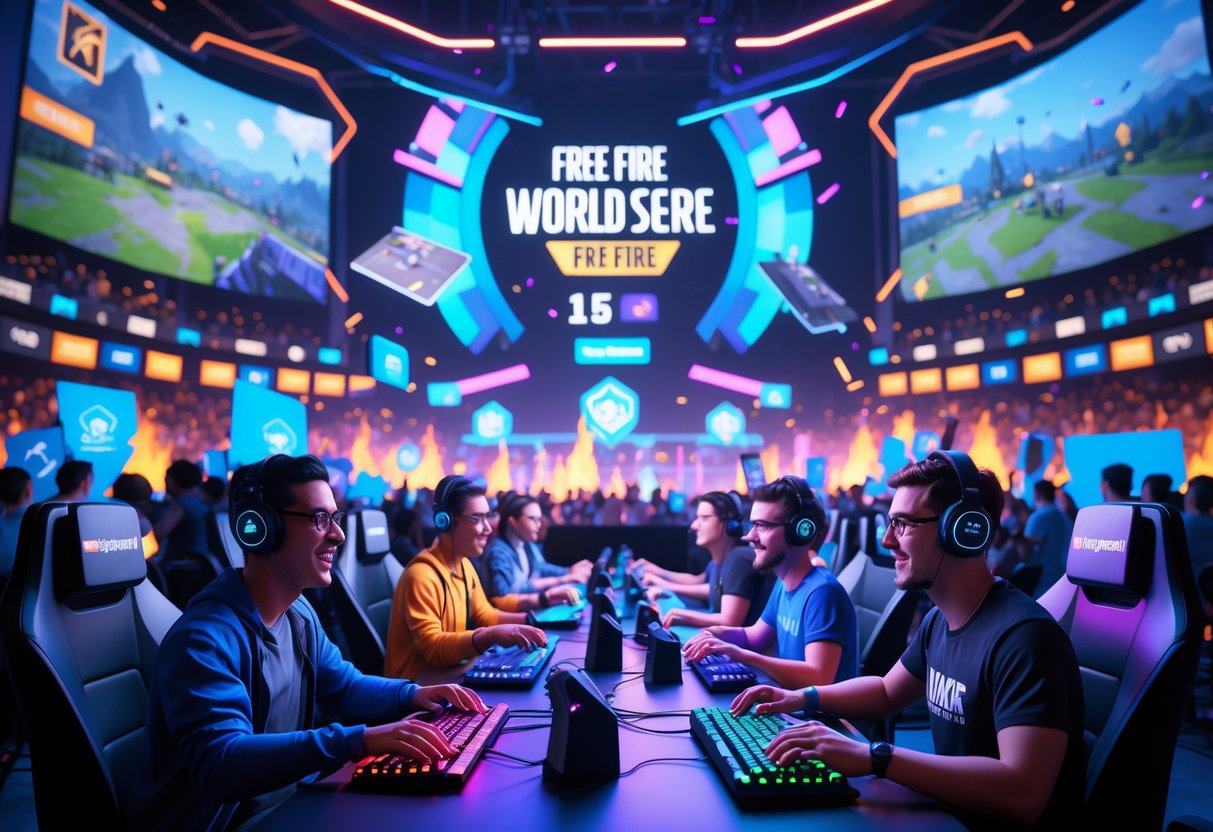
You can catch Free Fire World Series tournaments on the official YouTube channels, usually with streams kicking off around 6:30 PM IST. Plenty of viewers also grab Free Fire MAX redeem codes through special reward programmes during these big events.
Official Streaming Platforms
The official Free Fire esports YouTube channel is where most FFWS events stream live. They offer multiple language options, which is great.
Booyah is another go-to spot where Free Fire content creators host tournament coverage. Some fans actually prefer Booyah for its interactive features and chat during matches.
Try following these channels before tournaments get underway:
- Free Fire Esports (YouTube)
- Official Booyah Free Fire channels
- Regional Free Fire esports accounts
Quick win: Turn on notifications so you don’t miss any major tournament drops.
Streams usually start at 6:30 PM IST (9 PM GMT+8) for international events. They broadcast across different time zones to reach a global crowd.
Earning Free Fire MAX Redeem Codes
You can snag Free Fire MAX redeem codes through viewer rewards during FFWS tournaments. These unlock exclusive skins, characters, and other in-game goodies.
To qualify for viewer rewards, you need to watch the streams on official platforms. The system tracks your watch time and hands out codes for participating.
Warning: Stick to official channels for redeem codes. Tons of fake sites claim to offer codes, but they’re scams.
Common viewer rewards:
- Character skins from tournament collections
- Weapon blueprints with team designs
- Emotes for championship moments
- Diamonds for in-game spending
Redeem codes usually expire within 24-48 hours. It’s smart to claim them as soon as they’re announced on stream.
Frequently Asked Questions

FFWS sparks a lot of questions from both newcomers and longtime fans. Here are the most common ones about tournament dates, how to qualify, prize pools, where to watch, and how the series stacks up in the industry.
What are the dates for the Free Fire World Series 2025 tournament?
The Free Fire World Series 2025 Thailand Spring kicks off on 18 January 2025. It’s the first big FFWS event of the year.
Garena has held FFWS tournaments twice a year since 2021. We haven’t seen dates for the other 2025 events yet.
Registration usually closes a few weeks before things start. Teams need to sign up through Garena’s official channels.
How can teams qualify for the Free Fire World Series championship?
Teams have to fight their way through regional qualifiers. Each region sets up its own structure with a certain number of spots.
The process involves several rounds. Teams start in open qualifiers and move up to regional championships.
Top teams from each region earn direct invites to the FFWS. Some regions get more slots depending on player numbers and how strong their competition is.
What’s the prize pool for the upcoming Free Fire World Series?
The FFWS Thailand 2025 Spring has a £11,500 ($14,468) prize pool. This is just for the regional qualifier, not the main global event.
Big FFWS global tournaments usually offer $2 million in prizes. The 2021 Singapore and 2022 Sentosa events both had that amount.
Prize splits change based on tournament size and region. Global championships always pay out a lot more than regional qualifiers.
Where can fans watch the Free Fire World Cup matches?
You can watch Free Fire World Series tournaments live on YouTube. Garena uses their official channels to stream matches globally.
Sometimes you’ll find streams on Twitch or regional broadcasters. Local language commentary pops up on country-specific channels too.
After the live shows, highlights and replays get posted on official YouTube channels. It’s easy to catch up if you miss a match.
How does the Free Fire World Series compare to other major esports tournaments in terms of prize money?
The FFWS $2 million prize pool puts it near the top for mobile esports. It goes head-to-head with other big mobile gaming championships.
Traditional PC esports like Dota 2’s The International often go past $10 million. Still, mobile esports prize pools are climbing fast.
FFWS stands out in the mobile gaming scene. Even with smaller prize pools than PC tournaments, its viewership numbers show it’s a commercial powerhouse.
What was the initial year the Free Fire World Series was held?
The Free Fire World Series kicked off in 2019 in Rio de Janeiro, Brazil.
That first tournament offered a $400,000 prize pool.
Corinthians, a Brazilian team, grabbed the championship right in front of their home fans.
The event drew in 2 million viewers at its peak, which honestly set some wild records for mobile esports back then.
Garena started out holding the FFWS once a year until 2021.
After that, they bumped it up to twice a year, though a few editions got cancelled because of the pandemic.

